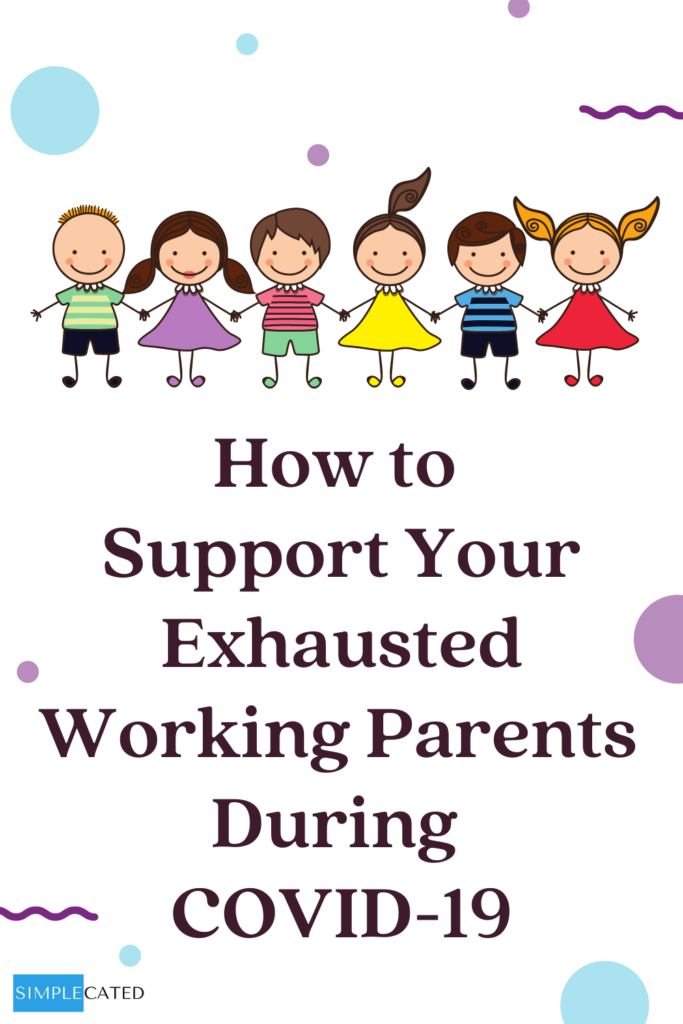An article from Today’s Parent popped up in my newsfeed this week describing how working parents are losing steam as they juggle working full-time jobs while also caring full-time for their children without the typical support systems. Being a working parent can already be a difficult juggling act. Add a COVID-19 pandemic shutdown to the mix, and it can be downright exhausting. With many schools announcing they’ll be closed the rest of the school year and summer camp possibilities unclear, there isn’t yet a light at the end of the tunnel for parents. From the number of shares and likes this article is receiving, it’s striking a chord with a lot of working parents.
Many bosses are providing flexibility, and there are a lot of tips and techniques on juggling everything. As the weeks go on, though, this is getting increasingly difficult for many working parents, those who are remote and who work onsite. If you don’t provide options that allow your employees to maintain their pay, you’re essentially asking them to put their children’s needs on the back burner for weeks (maybe months). The Families First Coronavirus Response Act (FFCRA) provides paid leave options for businesses with fewer than 500 employees, which provides some help, but there are a lot of employers not covered by this. Plus, as an employer, you need your employees! You don’t want them to feel like their only option is to take a leave of absence until this is over.
Evaluate the demands of the job. A lot of full-time jobs require much more than 40 hours a week. Over time, this can lead to burnout even in regular circumstances, so the risk is even greater right now. Review the workload of your employees and whether it’s reasonable and sustainable. This may mean reducing productivity metrics or narrowing project lists. Consider simple tweaks, such as not holding meetings during lunch time so that employees can help their children with lunch, which a French leader implemented to help her team.
If you already have a lot of employees on leave, leaning too hard on those who remain can lead to a cycle of more leave requests, so take good care of those who are there. Determine the items that are truly important, and have your team prioritize them. The rest can wait.
Offer reduced schedules and job-sharing. For some, putting in 40 hours a week may be next to impossible unless it involves a lot of late nights. Consider providing the option to temporarily reduce schedules. Having an employee who works 32 hours a week for you can be much more helpful than 0 hours a week.
If employees in the same department need substantially lower schedules, consider job-sharing. For example, one person works Monday – Wednesday, while the other works Wednesday – Friday. This allows for a handoff on Wednesdays so that everything keeps moving smoothly. Arrangements like this can be especially helpful for leadership roles where staff need someone they can go to for guidance and direction each day.
Encourage paid intermittent leave. Having a lot of employees out on continuous leave can be a burden on co-workers and on you as the employer, so consider providing options for intermittent leave. This pairs well with the above items, allowing employees to retain full-time status and continue all of their other regular benefits.
The FFCRA’s family leave option provides a starting point for many employers, especially since you can be reimbursed through tax credits. The leave can be taken intermittently, but one of the eligibility requirements is that no one else will be providing care for the child during the leave, so that may disqualify some of your employees if another adult in the house is available as well. It is paid at two-thirds their regular rate of pay, but there is a cap – up to $200 a day.
I think we can do even better, though. Consider adding an emergency Family Leave option to your benefits, and provide working parents and caregivers an amount of 100% paid leave they can take to care for their children. Take into consideration the needs of your employees and how long it looks like the typical childcare support systems may not be available. Google is providing paid leave of up to 14 full weeks; the leave can be taken intermittently as well. Make this available to all employees regardless of how long they’ve been employed by you and regardless of whether there’s anyone else able to help care for the child.
While the leave could be taken continuously, encourage your employees to try taking it intermittently. Outline the pros of this – they have more flexibility and time to focus on their families while staying connected with colleagues and having an outlet from childcare responsibilities. Even as some childcare options reopen, parents may be hesitant to send their children, so knowing they have an option like this can provide peace of mind and gain you more loyalty from your employees.
Care for your non-parent employees. A very important part of creating an environment that’s supportive of working parents is caring for your employees who aren’t parents. They’re putting in a lot of hours and have their own stresses too, so if you overload them and provide no flexibility, chances are they’ll come to resent working parents who seem to be getting all the perks. Consider an emergency Mental Health Leave option available to all employees that’s likewise 100% paid, has an amount of leave that’s available, and could be taken intermittently. It could run concurrently with Family Leave such that employees choose between them.
Bottom line – it’s important to support your working parents even during normal circumstances. Given that the typical support systems aren’t there right now, it’s even more important. Juggling work responsibilities while also taking care of children and playing the role of school teacher is immensely difficult and exhausting. In order to retain your employees, you must find ways to help them navigate these weeks and months we’re in.
Photo credit: By halfpoint / Canva





